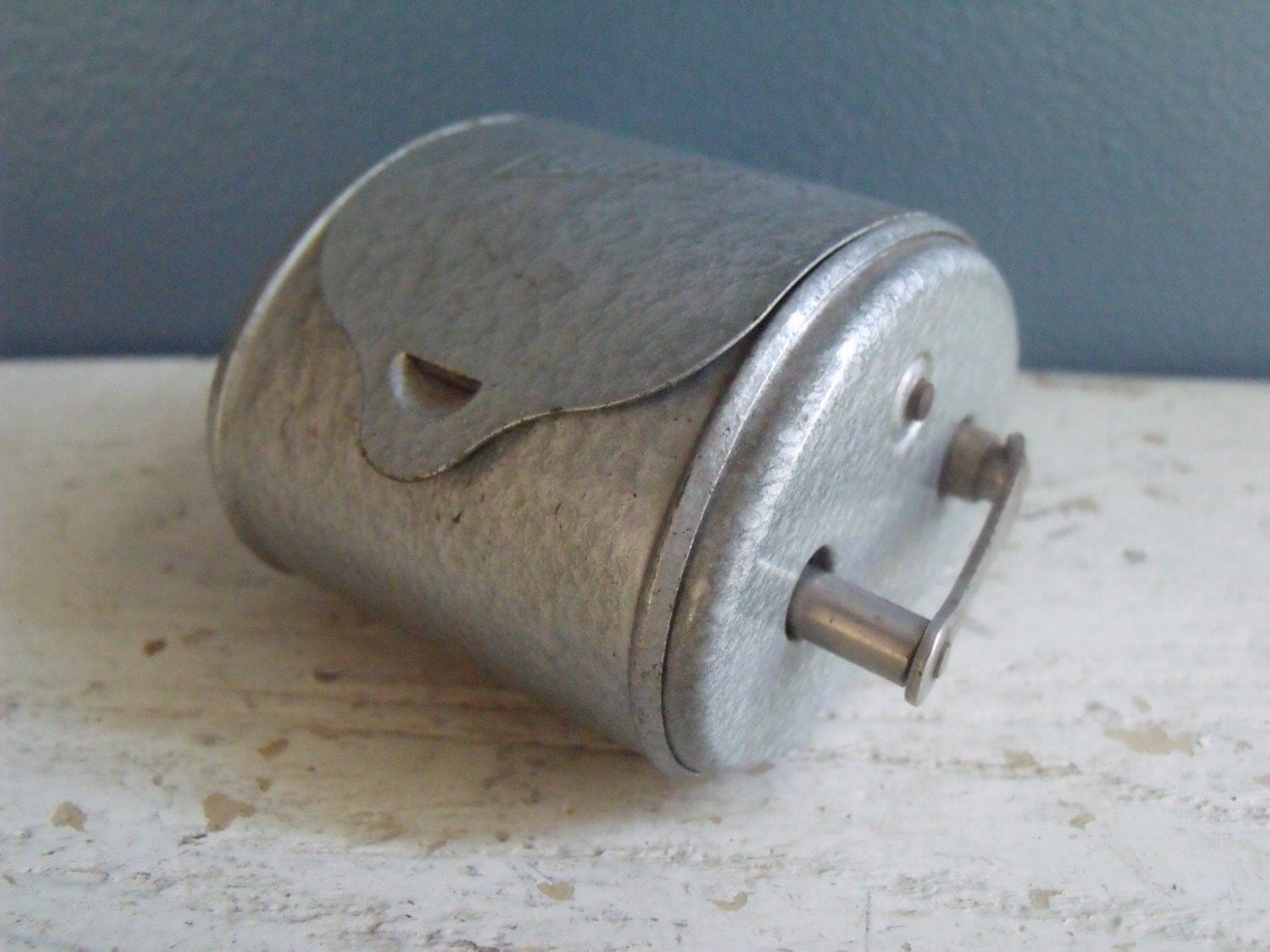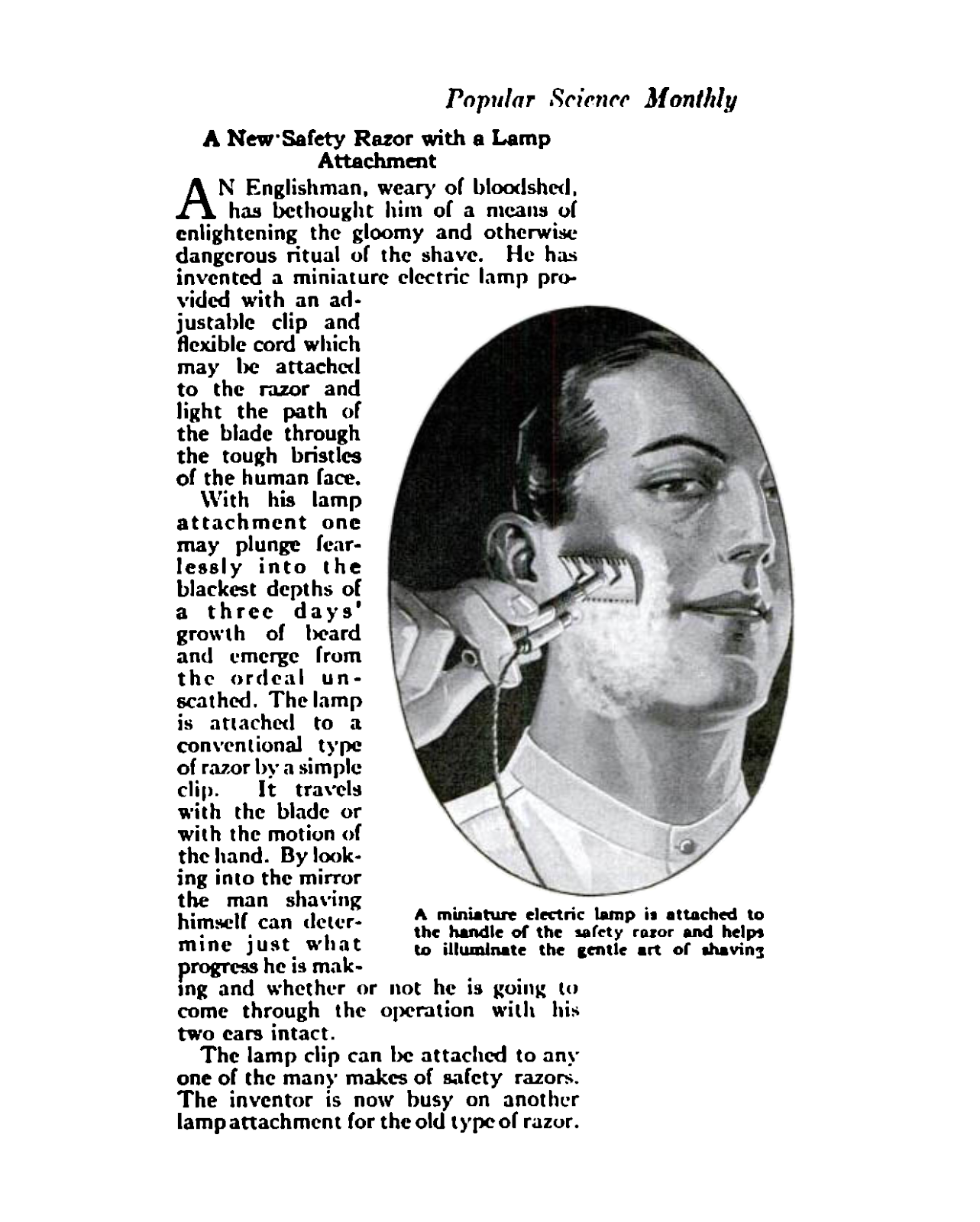Inspired by my recent acquisition of a WW1 Gillette Khaki, I have looked at what other military razors there are out there… this is the standard issue German razor from WW2, spotted on ebay in it’s original packaging.
Tag Archives: Gear
Razor blade sharperners
Halfway continuing from my musings on how old razor shaved when new – that is, with the original specification blade – I have spent a little time looking at how to keep a carbon blade sharp. It turns out that back in the day there was a LOT of ingenuity put into how to make your precious blades ‘fresh’, which is more critical with carbon steel blades due to the process of micro-pitting.
We may consider blades to be cheap today, but they cost comparatively more back in the old days
While I don’t usually take claims made in advertisements at face value, two months is a lot longer than the one week I use a blade before throwing it out… but then, part of the reason I throw them out is that I like to change things up. If you’re into traditional wetshaving to save money on the other hand, a blade sharpener makes a bit more sense – save money where you can.
There were quite a few different models too, working on several different principles:
How did the old razors shave back then?
I been thinking again, and sometimes when I do that my brain gets stuck on questions I cant answer…
Given that the original Gillette blade was – among other differences – noticeable thicker and therefore more rigid than today’s blades, and that perceived blade aggressiveness is often linked to blade exposure and angle… would an old razor (like, say, a Gillette Old Type from 1918) shave and feel any different back then compared to these days?
King Gillette’s original patent do state the following:
The blade of my razors made of’ sheet steel having preferably a uniform thickness of about six one-thousandths of an inch.
Or in measures more easy to understand; 6/1000″ = 0.1524 mm.
A fair bit of digging online seems to indicate that modern blades are about 0.10 mm thick, or about 2/3rds as thick as the old blade – assuming, off course, that the original blade was as thick as the patent calls for. It’s hard to tell exactly when blades got thinner, but over on another forum I spotted one guy claiming that
[blades] became a lot thinner after that; I have seen blades from the 50’s and 60’s that went from 0.10 to 0.08 and even 0.06mm.
For all I know the increased thinness of the blades could have started sooner, the the modern shape and perforation of the DE blades seems to have appeared around 1930. Going by the patent numbers listed on a US Gillette Blue from 1935, it’s hard to tell… several references to “thin, flexible blade”, but nothing on just HOW thin it is.
When I raised this question on my favourite shave forum, the guy making my preferred aftershave pointed out that he likes SE razors due to their thicker, stiffer blades – which like DE blades used to be even thicker and therefore even stiffer – since they flexes less. I should probably get my callipers out to measure a new and old SE blade, just to see how pronounced the difference really is.
Stiffening of a blade can also be achieved by twisting it in a slant razor, and slants are often considered to be more “aggressive”… even if I personally don’t think my slants are aggressive, just efficient – perhaps aggressive is the wrong term, even if it’s commonly used to denote the opposite of a mild razor.
Making a number of wild assumptions, desperately pulling on what I learned in structural mechanics more than two decades ago, and hoping that this website have got their code right; the old blade ought to be twice as stiff as the current blades – with the biggest caveat being that the modulus of elasticity is the same for the steels used.
These guys offers three hole blades that are a dimensional match for the pre-1929 Gillette blade… and it seems that one of the thickness’s they offer match the old blades. But the blades are made for cutting plastic film, so they will probably be rotten for shaving with.
After all that searching and math, I still have no real idea how a blade twice as stiff would affect the behaviour of an Old Style Gillette… Combining what what we know about SE razors and their stiffer blades with what we know about the torsionally stiffened blades in slants, I’m leaning towards the idea that the Old Type Gillettes using the pre-1929 blades may have been more aggressive than they are with the thinner blades of today.
I may be wrong though, with all the assumptions and guestimates underpinning that idea.
Old style DE blades
This week I’m trying out my ‘new’ razor – the Gillette “Khaki” Old Type – and is so far quite enjoying the experience.
The blade I’m using is rather different both in alloy and in shape from what the US Doughboys would have tucked away in their dopp bag as they were deposited into the maelstrom of mud and horrors that were the trenches of the great war…
The alloy was mild carbon steel, and there was three more-or-less circular holes. The old school blades were also thicker than the blades used now, which probably to some extent affects the perceived aggressiveness of old razors by dint of altering the blade angle slightly.
Today’s blades are commonly made out of stainless steel, and have a single elongated hole shaped to fill all DE razors (not just the three piece razors).
An old soldier go back to war
Introducing my latest razor; a Gillette Khaki Set from WW1 – aka the Great War, the War to End All Wars (that sentiment didn’t pan out). Thanks to a fellow from my favourite shave forum, this 96 year old soldier will once again return to active duty – although this time it will hopefully just be for various exercises and when I’m on the Go, and not the muds of Flanders.
The serial number under the guard is a crisp J4173, which according to my source places it as an reasonable early production military razor, manufactured in 1918. Another source claims that the single button closure is a rare variant; perhaps experience proved that a two button closure was more stable.
There is a minor crack in the handle – but from what I can tell online that is both common, repairable and not influencing the shave with these old, classic Gilletter. The mirror has gone AWOL at some point in the life of this old soldier, but my GoBag already have a small, unbreakable mirror in it so I’ll manage (unless someone has a spare khaki-set mirror they need to get rid off…). The blade holder should fit one or two modern blades on the diagonal, so I’m set in that regards provided I remember to refill. The fabric and seams are in surprisingly good condition considering the age of this set – the only thing worn is the print on the inside of the flap.
I’ve yet to shave with this baby, but when I do I’ll be sure to share my impressions.
1933 oscillating razor

NEW SAFETY RAZOR HAS OSCILLATING BLADE
Especially designed for those with tender skins and tough beards, a new safety razor employs an oscillating blade to cut the hairs. While the razor is drawn across the face, a pair of friction rollers revolve and cause the whole blade to move sideward with a reciprocating motion, as indicated by arrows in the photograph at left. As a result, this miniature mowing machine is declared to give an unusually close shave with a minimum of chafing and discomfort. The one piece razor may be operated and cleaned with one hand.
More old clippings – modified razor
MODIFIED SAFETY RAZOR GIVES CLOSE SHAVE
To obtain an extra close shave with a standard type double-edge safety razor, I filed off all the guard teeth on one side of the razor holder except the two end ones. I first shave rapidly with the guarded side and then finish more cautiously with the unguarded side. There is very little danger of cutting oneself because the tooth left at each end forms a satisfactory guard. It is important, however, not to remove them. Experiments made with a razor having all the guard teeth filed off on one side revealed that the corners of the blade were likely to cause small cuts, no matter how carefully the razor was used.—P. W. Calhoun.
Emergency razor?
An emergency razor that fits in my wallet? YMMV, but I rather be unshaven than doing a dry shave with a cartridge razor.
Neat idea and execution though…

A clip on light for your razor
A New-Safety Razor with a Lamp Attachment
AN Englishman, weary of bloodshed, has bethought him of a means of enlightening the gloomy and otherwise dangerous ritual of the shave. He has invented a miniature electric lamp provided with an adjustable clip and flexible cord which may be attached to the razor and light the path of the blade through the tough bristles of the human face.
With his lamp attachment one may plunge fearlessly into the blackest depths of a three days’ growth of beard and emerge from the ordeal unscathed. The lamp is attached to a conventional type of razor by a simple clip. It travels with the blade or with the motion of the hand. By looking in the mirror the man shaving himself can determine just what progress he is making and whether or not he is going to come through the operation with his two ears intact.
The lamp clip can be attached to any one of the many makes of safety razors. The inventor is now busy on another lamp attachment for the old type of razor.
Gloomy and dangerous my bum… well, maybe it was in August of 1916.
Review of the Yoresh scuttle
About seven weeks ago, the scuttle I ordered from Yoresh on Etsy arrived. Since then, I’ve used it for the majority of my shaves.
It performs well – the fact that I have used it for almost all my shaves is a testament to that.
The bowl is slightly shallow, but a deeper bowl would mean a much larger scuttle overall, so it’s a trade off that is worth it in my opinion. The patterning in the bottom helps building the lather, even more so if your brush is springy with lots of backbone.
It retains the heat well when I fill it with hot water, and even without water it stays warm to the touch for quite some time – the thich walls gives it quite some thermal mass. The downside of that is that it needs time to preheat as well… again, a trade off that is worth it.
Bottom line, if you’re in need for a scuttle, a Yoresh might be just the thing.











%2BGillette%2BBlade.jpg)








